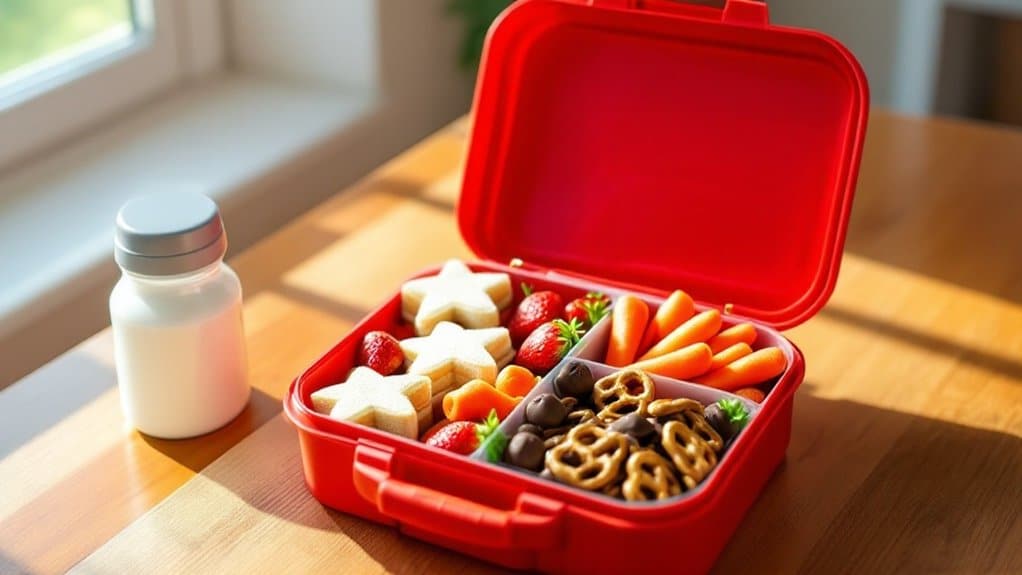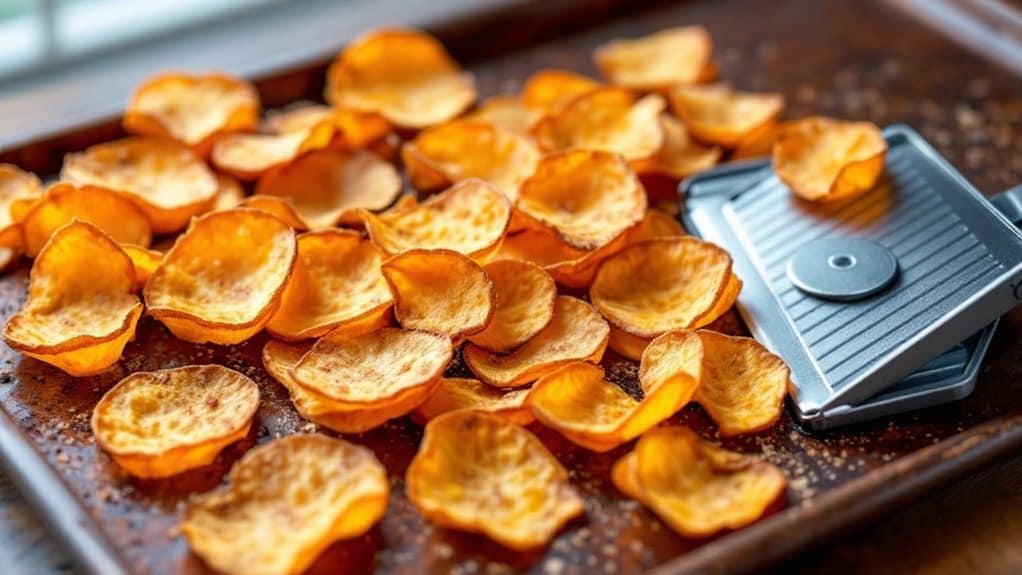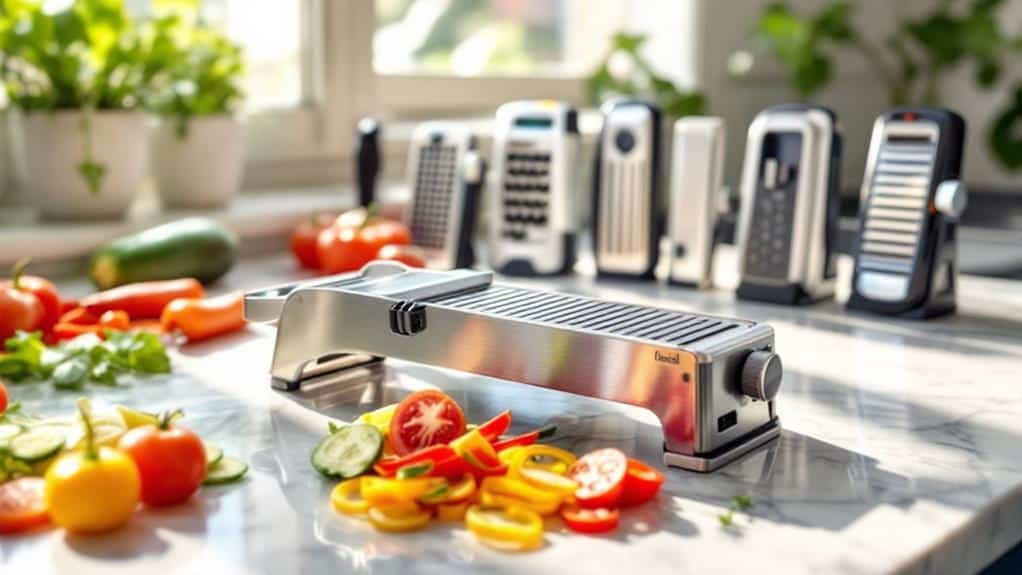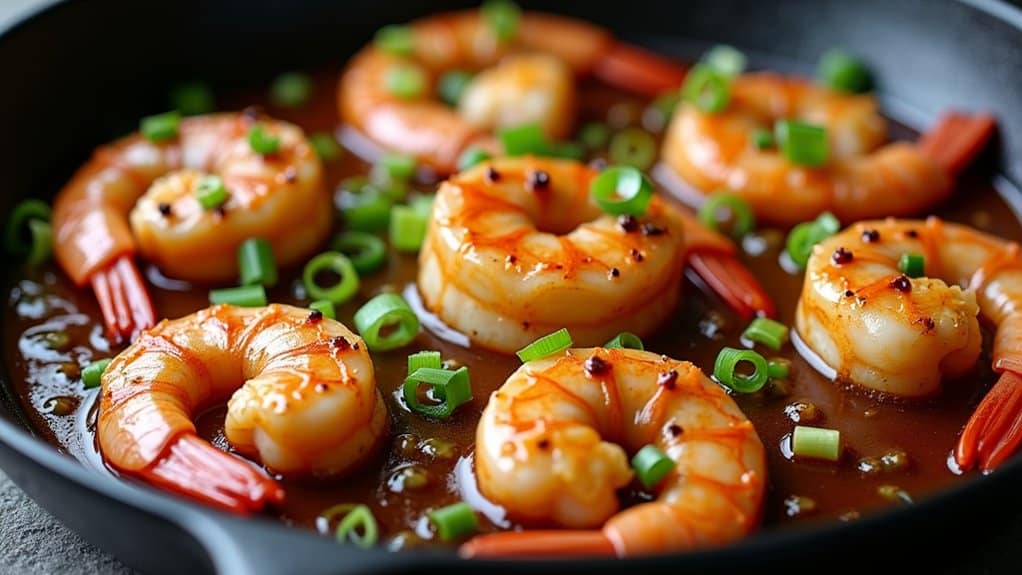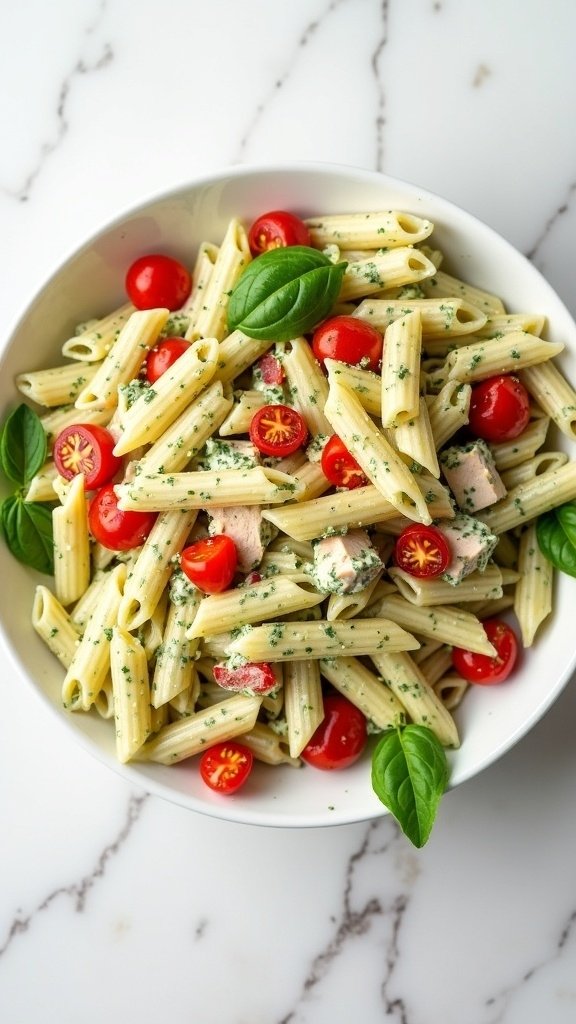School lunches don’t have to feel like a daily battle. You’re probably tired of the morning rush, picky eaters, and balancing nutrition with what your kids will eat. Instead of stressing, set up a dedicated lunch-packing station with pre-portioned ingredients and prep your lunches the night before. Stock up on versatile items like whole grain crackers, dried fruits, and protein-rich options that make assembly quick and easy. Get your kids involved – they’re more likely to eat what they help create. Let’s explore some game-changing strategies that’ll transform your lunch-packing routine from stressful to successful.
Key Highlights of School Lunch Pain Points
- Pack lunches the night before and establish a dedicated prep station to eliminate morning stress and save time.
- Stock a designated fridge drawer with pre-portioned ingredients for quick assembly during busy mornings.
- Use the weekend for batch-cooking and freezing sandwiches that will thaw perfectly by lunchtime.
- Implement an assembly-line method to pack multiple lunches simultaneously, reducing daily preparation time significantly.
- Involve children in meal planning and packing to increase their interest and reduce resistance to healthy options.
In this Article
School Lunch Pain Points
Every morning, parents face the intimidating task of packing school lunches that their kids will actually eat. They must manage a variety of lunchboxes while trying to keep things healthy and let’s be honest, sometimes it feels like solving a complex puzzle.
Kid preferences can make you want to pull your hair out. One week they love turkey sandwiches, the next week they won’t touch them. Add dietary restrictions and food allergies to the mix, and you’re practically performing culinary gymnastics to keep everyone safe and satisfied.
Finding the sweet spot between nutritional balance and what your children will consume is tricky. You want to pack fresh fruits and vegetables, but watching them return home untouched is frustrating (and wasteful).
Budget constraints don’t make things easier. Those convenient pre-packaged options might save time, but they’ll drain your wallet faster than a leaky faucet. Plus, they’re often loaded with preservatives and excess sugar.
You’re not alone in this daily challenge. Many parents find themselves staring into the fridge at 6:30 AM, wondering how to make lunch both exciting and nourishing without breaking the bank. Consider trying bento box lunches which offer balanced portions while making meals more visually appealing to kids. Parents must balance packing healthy lunches with time and budget constraints.

Quick Prep Essentials
While packing school lunches might feel overwhelming, having the right tools and ingredients on hand makes the process much smoother. Start by stocking your pantry with versatile items that can transform into quick snacks: whole grain crackers, dried fruits, and portioned nuts.
You’ll want to invest in key containers to make your life easier. Get yourself a good set of divided lunch boxes, reusable snack bags, and small dip containers. Trust me, they’re game-changers for keeping foods separate and fresh. Having the right tools and ingredients ensures that the lunch stands out from the rest in terms of both nutrition and presentation.
Keep a rotation of easy recipes in your back pocket. Mix and match proteins like hard-boiled eggs (make a batch on Sunday), deli meats, or leftover grilled chicken. Pair them with ready-to-go vegetables that you’ve pre-cut on the weekend.
Don’t forget your prep station essentials. A good cutting board, sharp knife, and measuring cups should always be within reach. And here’s a pro tip: dedicate one drawer in your fridge to lunch-packing items only. You’ll save precious morning minutes when you’re not hunting for ingredients.
Batch cooking weekends can save you up to $2,500 annually compared to buying lunch daily.
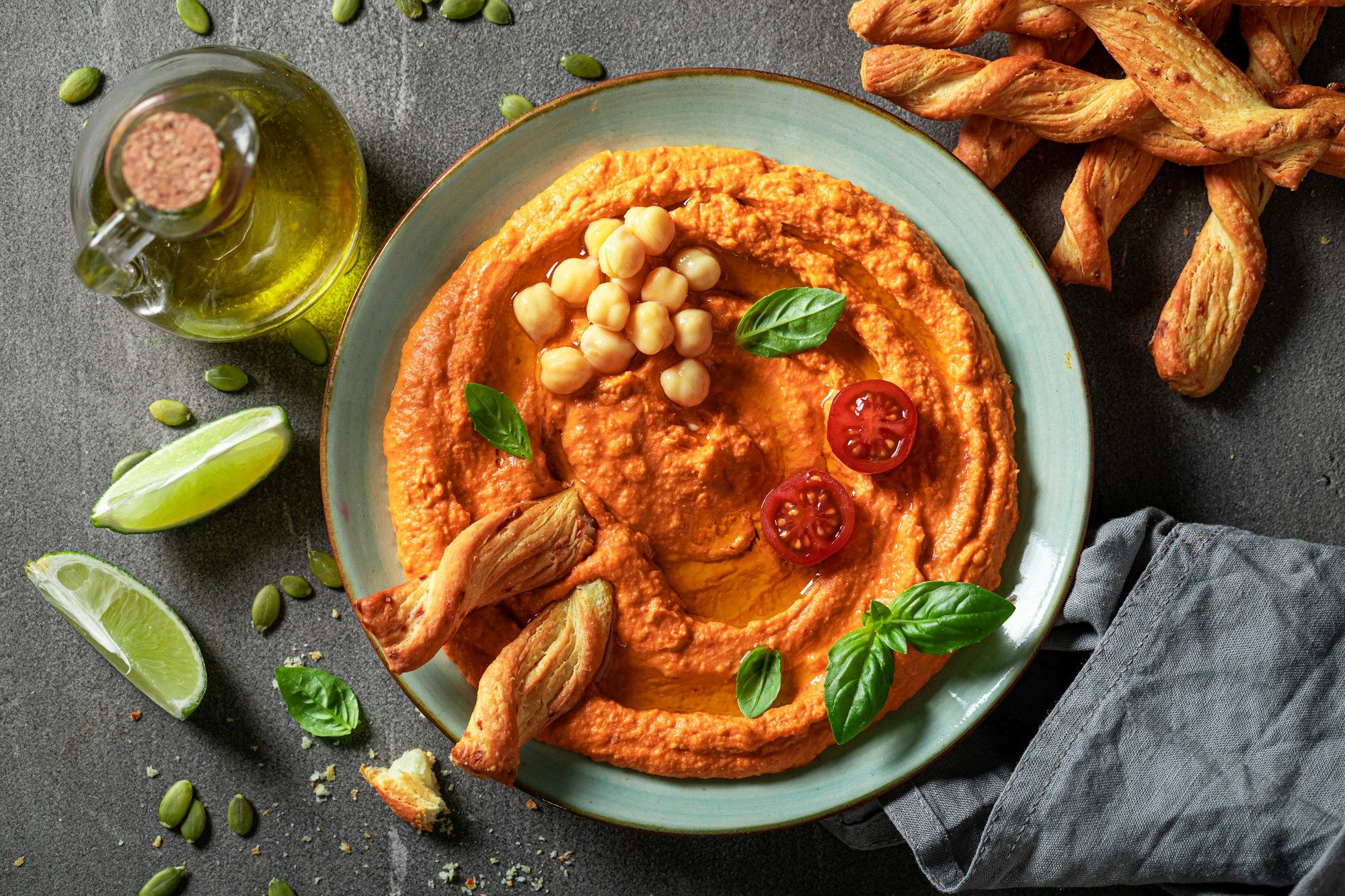
Protein Power Combinations
Now that you’ve got your prep station ready let’s focus on protein-packed combinations that’ll keep your kids energized throughout the school day. Gone are when protein meant just a plain turkey sandwich or a hard-boiled egg.
You’ll love these creative protein sources that make lunchtime exciting and nutritious. Season them with a pinch of salt to enhance flavor without compromising health. Mix and match from this handy guide to create protein-packed snacks your kids will actually eat:
| Main Protein | Fun Pairing |
|---|---|
| Greek yogurt | Honey drizzle and berries |
| Turkey rolls | Cream cheese and cucumber |
| Hummus | Rainbow veggie sticks |
| Tuna salad | Apple slices and crackers |
| Nut butter | Celery boats with raisins |
Don’t forget to get your kids involved in choosing their protein combinations. When they help plan, they’re more likely to eat what’s packed. My daughter went from being a picky eater to the lunchroom trendsetter with her “rainbow protein boxes” – her special name for compartmentalized containers filled with colorful protein choices.
Remember to keep portions kid-sized and include an ice pack for temperature-sensitive items.
For an extra energy boost, try making homemade energy balls with rolled oats, chia seeds, and dried fruits that can be prepared in advance and stored in the refrigerator.

Smart Lunch Box Packing Tips
Packing a school lunch becomes second nature once you’ve mastered key strategies. With proper lunchbox organization, you’ll be able to breeze through the morning routine while creating meals your kids will actually eat.
Let’s explore the game-changing tips that’ll revolutionize your lunch-packing routine:
- Pack lunches the night before – you’ll thank yourself during the morning rush. Store assembled lunchboxes in a designated fridge spot to grab and go.
- Create a “lunch packing station” in your kitchen with divided containers, utensils, and napkins within arm’s reach. You’ll save precious minutes when everything has its place.
- Master food presentation by using colorful silicone cupcake liners as dividers to serve food. Kids eat with their eyes first, and these cheerful separators make even simple sandwiches look special.
- Invest in high-quality containers with leak-proof compartments. Nothing ruins a lunch faster than yogurt seeping into crackers!
Remember to involve your kids in the packing process when possible. They’re more likely to eat what they’ve helped prepare, and it’s a sneaky way to teach them about balanced meals.
Prepare protein-packed bento boxes with lean proteins, hard-boiled eggs, and crunchy nuts to energize your kids throughout the school day.
Five Days Worth Meal Ideas
With clever packing strategies, you can fill those organized lunchboxes with appealing meals. Let’s explore five days of kid-friendly recipes that will excite your child’s lunch routine.
Monday kicks off with a classic turkey wrap – but here’s the twist: use colorful tortillas and add crispy lettuce, cheese strips, and a side of crunchy carrots. This ensures that the classic turkey wrap stands out from the rest. Tuesday brings a protein-packed bento box featuring bite-sized chicken nuggets, cucumber wheels, and ranch dip.
By Wednesday, you’ll want to mix things up with a breakfast-for-lunch combo. Think mini pancake sandwiches filled with cream cheese and berries paired with yogurt parfait. Thursday’s star is a DIY pizza lunchable using pita rounds, marinara sauce cups, and shredded cheese.
Round out the week with Friday’s crowd-pleaser: mini slider sandwiches on Hawaiian rolls with turkey and cheese. Add some goldfish crackers and apple slices for the perfect finish. Transform ordinary sandwiches into exciting meals using cookie cutter shapes to create fun designs that delight your kids.
Make-Ahead School Lunch Strategies
Getting ahead of the lunch-packing rush can transform your hectic mornings into smooth sailing. With a solid meal-prep strategy, you’ll spend less time scrambling and more time enjoying those precious morning moments with your kids.
The key to successful make-ahead lunches is smart planning and efficient execution. This allows you to serve nutritious lunches throughout the week. You should dedicate a specific time during your weekend to preparing components that will give you lunch variety throughout the week.
Here’s what you can prep in advance to make your weekday mornings easier:
- Wash and cut fruits and vegetables, storing them in portioned containers
- Cook and portion protein options like grilled chicken, hard-boiled eggs, or turkey meatballs
- Prepare grab-and-go snacks by creating portion-sized bags of crackers, nuts, or trail mix
- Make sandwich fillings and store them separately from bread to prevent sogginess
I’ve found that spending just an hour on Sunday afternoon saves nearly 30 minutes each weekday morning. That’s time you could spend hitting the snooze button again – we won’t judge! Remember to rotate your prep items regularly to keep lunches exciting and fresh.
Using airtight containers for your prepped ingredients will help prevent freezer burn and extend the shelf life of your make-ahead components.

Balanced Nutrition Building Blocks
Understanding balanced nutrition forms the foundation of a healthy school lunch. When you pack your child’s lunch, think of it as assembling the building blocks to fuel their day. Each component is crucial in keeping their energy steady and their minds sharp. Balanced nutrition also includes managing salt intake to ensure a healthy school lunch.
Start with protein – it’s your child’s power source. Include lean meats, eggs, or legumes about the size of your palm. Remember, portion control doesn’t mean skimping; it means right-sizing for your child’s needs.
Next, focus on nutrient density by adding colorful fruits and vegetables. Think rainbow: red strawberries, orange carrots, green snap peas. You’ll be amazed how much more appealing lunch becomes when it’s visually exciting (and no, rainbow sprinkles don’t count – though we wish they did!).
Don’t forget whole grains and healthy fats. A sandwich on whole wheat bread or whole grain crackers provides sustained energy. Add a handful of nuts or seeds for brain-boosting fats.
Make sure to include a calcium source – dairy or fortified alternatives keep growing bones strong. Your child’s future self will thank you for this one!
Mindful eating practices during lunch break can help children better engage with their food while reducing stress and improving overall well-being.

Understanding Food Groups
Understanding food groups is essential for maintaining a balanced diet, especially when packing school lunches. The five main food groups are fruits, vegetables, starchy foods, dairy foods, and proteins. Each group provides essential nutrients, vitamins, and minerals that the body needs to function properly.
Fruits and vegetables are rich in vitamins, minerals, and fiber, making them an excellent choice for a healthy diet. Add colorful vegetables like carrots, bell peppers, and snap peas to your child’s lunchbox. Starchy foods, such as bread, rice, and pasta, provide energy and fiber. A slice of whole-grain bread or a serving of brown rice can be a great addition to any meal.
Dairy foods, like milk, cheese, and yogurt, are rich in calcium and protein, essential for growing bones. Including a small container of yogurt or a slice of cheese can make a big difference. Protein-rich foods, including meat, fish, eggs, and beans, help build and repair muscles. A serving of grilled chicken or a hard-boiled egg can keep your child energized throughout the day.
A well-balanced diet should include a variety of foods from each group. The Eatwell Guide recommends trying to eat a variety of different foods from the five main food groups. Consuming the right amount of food and drink is essential to achieve and maintain a healthy body weight.
Food Presentation Tips
Food presentation is an art that can elevate the dining experience, even for school lunches. Here are some tips to make your meals more appealing:
- Use colorful ingredients: Add some color to your plate with fresh vegetables, fruits, and herbs. A rainbow of colors not only looks appealing but also ensures a variety of nutrients.
- Balance flavors: Combine sweet, sour, salty, and umami flavors to create a harmonious taste experience. For example, pair sweet apple slices with savory cheese or salty bacon bits.
- Add texture: Incorporate different textures, such as crunchy, smooth, and soft, to add depth to your dish. Think of adding crunchy carrot sticks alongside a smooth hummus dip.
- Garnish with fresh herbs: Fresh herbs like parsley, basil, and rosemary can add a pop of color and freshness to your dish. A sprinkle of chopped parsley can make a simple salad look gourmet.
- Use creative serving dishes: Choose dishes that complement your food’s colors and textures. Bento boxes with compartments can make even a simple meal look special.
By following these tips, you can create visually appealing meals that will make your family and friends want to dig in.
Elevating the Appeal of School Lunches
School lunches can be challenging, but with a little creativity, they can be more appealing. Here are some ideas:
- Offer a variety of options: Include a variety of healthy options, such as fruits, vegetables, whole grains, and lean proteins. A mix of different foods keeps lunch interesting and nutritious.
- Use colorful ingredients: Add some color to the plate with fresh fruits and vegetables. Brightly colored foods are more appealing and entice kids to eat veggies.
- Make it fun: Use fun shapes and presentations to make mealtime more engaging. Cookie cutters can transform a plain sandwich into a fun shape that kids will love.
- Involve the kids: Let kids help with meal planning and preparation to make them more invested in their meals. When children have a hand in making their lunch, they are more likely to eat it.
- Provide a comfortable dining environment: Create a welcoming atmosphere that encourages socialization and relaxation. A pleasant lunch experience can make kids look forward to their meal.
Elevating the appeal of school lunches can encourage kids to make healthier choices and develop a positive relationship with food.
Budget-Friendly Eating
Eating on a budget doesn’t have to mean sacrificing flavor or nutrition. Here are some tips for budget-friendly eating:
- Plan your meals: Plan your meals in advance to avoid last-minute takeout or fast food. A weekly meal plan can help you stay organized and save money.
- Shop smart: To save money, buy in bulk, use coupons, and shop for seasonal produce. Seasonal vegetables and fruits are often cheaper and fresher.
- Cook at home: Cooking at home can be healthier and cheaper than eating out. Home-cooked meals allow you to control the ingredients and portion sizes.
- Use affordable protein sources: Beans, lentils, and eggs are affordable protein sources that can be used in a variety of dishes. A lentil soup or an egg salad can be both nutritious and budget-friendly.
- Stretch your ingredients: Use leftovers to create new meals and stretch your ingredients. For example, leftover roasted chicken can be used in sandwiches, salads, or soups.
By following these tips, you can eat well without breaking the bank.
Cost-Effective Lunch Solutions
Packing a lunch can be a cost-effective and healthy alternative to buying lunch. Here are some ideas for cost-effective lunch solutions:
- Use leftovers: Make tomorrow’s lunch from last night’s dinner. Leftover pasta, stir-fry, or roasted vegetables can make a delicious and easy lunch.
- Pack a salad: Salads are a healthy and affordable option that can be made with various ingredients. A simple salad with greens, beans, and a hard-boiled egg can be filling and nutritious.
- Make a sandwich: Sandwiches are a classic lunch option that can be made with a variety of fillings. Mix whole-grain bread with lean proteins, vegetables, and a tasty spread.
- Use affordable ingredients: Beans, lentils, and eggs are affordable ingredients that can be used to make healthy and filling lunches. A bean salad or an egg wrap can be both economical and satisfying.
- Avoid single-serving packaging: Avoid single-serving packaging to reduce waste and save money. Buy snacks in bulk and portion them into reusable containers.
By packing a lunch, you can save money and eat healthier.
Time-Saving Parent Hacks
Life as a busy parent means every minute counts when preparing school lunches along with other things like work and household chores. You’re juggling multiple responsibilities, and the last thing you need is to spend precious morning time assembling complicated meals.
Let’s explore four game-changing hacks that’ll make your life easier while keeping those lunchboxes interesting:
- Prep stations: Create a designated lunch-packing zone in your kitchen with pre-portioned containers of fruits, veggies, and snacks. You’ll feel like a lunch-making ninja!
- Weekend power hour: Dedicate one hour on Sunday for easy recipes and meal planning. Batch-cook proteins, slice vegetables, and portion snacks into grab-and-go containers.
- Assembly line method: Set up ingredients in order and pack multiple lunches simultaneously. You’ll cut your packing time in half!
- Make-ahead sandwich freezer stash: Prepare and freeze PB&J or deli sandwiches (minus wet ingredients like lettuce and tomato). They’ll thaw perfectly by lunchtime.
Studies show that organized meal planning saves valuable time and reduces costs through efficient bulk buying and preparation.
School Lunch Pain Points Frequently Asked Questions
How Can I Prevent My Child From Trading Their Lunch With Others?
You can limit lunch trading and peer influence by packing foods your child loves, discussing food safety risks, and creating fun lunch notes. Make lunches exciting so they’ll want to keep their own meal.
What Lunch Containers Are Safest for Keeping Food at Proper Temperatures?
You should use high-quality insulated containers with double-wall vacuum sealing. These containers will maintain temperature control for hours, keeping hot foods above 140°F and cold items below 40°F for food safety throughout lunchtime.
How Do I Handle My Child’s Sudden Dislike of Previously Favorite Foods?
Don’t panic when your child’s food preferences shift – it’s normal for taste changes to occur. Keep offering your favorite foods occasionally, but don’t force them. Stay patient and continue introducing varied options alongside familiar ones.
Should I Pack Different Portions for My Children of Different Ages?
You’ll want to pack age-appropriate portions for each child, as their nutritional needs differ. Consider their sibling preferences too – what works for your teenager won’t be right for your first-grader.
What’s the Best Way to Introduce New Foods in School Lunches?
Start with small food exposure at home first. You’ll want to gradually introduce new items alongside familiar favorites in their lunch. Don’t force it—mix a little new food with what they already love.
Summing Up Overcoming School Lunch Pain Points
You’ve got all the tools you need to transform school lunch prep from stressful to successful. Start with these simple strategies, mix and match protein combinations, and use those time-saving hacks to your advantage. Remember, it’s not about creating Instagram-worthy masterpieces – it’s about nourishing your kids with love and good food. When you’re feeling overwhelmed, just take it one lunch box at a time.

